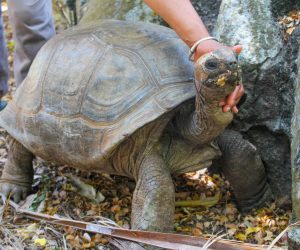SAVA – the vanilla destination in Madagascar

The SAVA region is formed by the district of Sambava, Antalaha, Vohemar and Andapa, with the geographical coordinates 13 °80 and 16° south latitude and 49°20 and 50°20 east longitude. It covers an area of 24,000 square kilometers, or about twenty times the city of New York.
The population of the region SAVA, nearly homogeneous, is estimated at 1,009,000 people. That represents almost half of Montreal’s population (QC, Canada). This population is unevenly distributed in the four districts with 32% in Sambava, Antalaha to 29%, 23% and 16% to Vohemar Andapa.
Speaking names
Sambava got its name after the word Sahambavany which means “place where rivers flow into the sea after having encountered”.
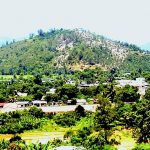
In fact, Sambava is located where three rivers meet and is at the heart of the green triangle region of SAVA.
Antalaha, also known as “the Mecca of vanilla,” means litteraly “where there is plenty of water.”
Vohemar, also called Iharana, comes from Vohitra Maro which means “where there are many villages”.
Finally, Andapa means “the palace”. It was named after the king Radama I built a camp on this site for his coastal expeditions on the Big Island. Radama I prevailed in Madagascar between 1810 and 1828.
Economic brief
The economic activities in the region depend on the existing natural units. Thus, there are five sub-areas:
– the littoral zone along the coast with a length of 270km where predominant cultures are rice, coffee and vanilla;
– the intermediate zone, between 60 and 250 m of altitude, is the area of excellence for cash crops: vanilla, coffee, cloves and pepper
– the Intermountain basin of Ankaibe (Andapa) deemed by the existence of excellent soil for rice culture
– the mountainous area with altitudes up to over 2000 m, which is characterized by the practice of the tavy, a forest clearing method by fire, to practice subsistence crops
– the breeding area in the north, dominated by cattle ranching, but also crops culture like rice, cassava, corn, groundnuts, etc.
Except for the last zone, the direct or indirect exploitation of the forest and agriculture leaves little room for farming in the region of SAVA.
Humid tropical climate
The humid climate of the SAVA region gives an ideal accommodation of vanilla plants. Average annual temperatures in the region are between 18 ° C and 30 ° C. The average rainfall is abundant

throughout the year and reach their peaks in February-March. Antalaha is the wettest with 263 mm on average in February. Sambava and Vohemar are nearly similar in temperature and precipitations. Andapa may be “cooler” in the region but the mean minimum temperature is 13 ° C in September. Talk about cool weather!
SAVA and vanilla
The SAVA region is the world capital of natural vanilla, the world desserts spice star. The name vanilla comes from the Latin vagina which means sheath or case, in reference to the pod containing the pulp of aromatic small black seeds.
Vanilla originated in Mexico and has a history associated to the chocolate with the Mayans and Aztecs who called it back then tlilxochitl or “black flower”.
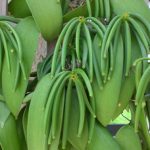 Spaniards would have discovered vanilla in the current location of Mexico City. From there it spread throughout the now known producer countries . Vanilla was introduced in Madagascar on 1870 and the Big Island became the largest producer in 1924.
Spaniards would have discovered vanilla in the current location of Mexico City. From there it spread throughout the now known producer countries . Vanilla was introduced in Madagascar on 1870 and the Big Island became the largest producer in 1924.
According to recent statistics, the vanillin, a substitute of natural vanilla, synthesized since 1874, occupies over 99% of the vanilla market. That is to say that the majority of essences and vanilla flavors available for consumption is made up of artificial vanilla.
Madagascar bourbon vanilla
Natural vanilla is the fruit of vanilla plant, a climbing orchid that is pollinated artificially by “matchmakers” equipped with a special needle (Albius method). Each flower must be individuallypollinated by hand … by gentle, sensitive and caring local women! You grils know what we’re talking about here… Then it takes 8 to 10 months to harvest the green pods still odorless. Brownish vanilla available on the market is obtained after the preparation of those green pods.
The vanilla preparation is traditional and is performed by the farming villages of SAVA as below :

– scalding in hot water for 1 min,
– steaming in wooden boxes padded with blankets
– sun drying on a mat made with sisal
– separating the industrial vanilla from the household quality vanilla (better quality)
– refining in wooded trunks padded with parchment paper
– grading by size
– and packaging in bundles, bags or braided.
1 kg of green vanilla give after preparation about 250 g of dry vanilla.
The best pods will have a length of at least 15 centimeters (6 inches), with no split, no scars, nor dry. The most outstanding quality pods are frosted by the vanillin, the aromatic component, which crystallize on the surface.
Madagascar currently produces 60% of natural vanilla in the world including the vanilla used to flavor the famous Coca Cola drink . Madagascar’s vanilla belongs to the label Bourbon Vanilla from the Indian Ocean islands versus Mexican or Tahitian productions.
Natural parks

SAVA is the greenest region of Madagascar with its dense rain forest of medium altitude spread over the whole east.
The region has two national parks namely Masoala and Marojejy, and the a special reserve namely Anjanaharibe South.
In Masoala, the forest meets the sea. A prowess of nature! It is a very rare fact that a primary forest drops more than 1 300m altitude down to the sea. Masoala is also one of the places in Madagascar where you can observe marine nature with humpback whales, Southern right whales, dolphins, corals, frogs, etc.
To describe Marojejy, people will tell you that “it is a sacred mountain and a hell of a mountain.” Marojejy alone contains 33% of reptiles and amphibians known to Madagascar.
The South Anjanaharibe reserve is home to the famous Babakoto or Indri Indri, the Simpona malandy or Propithecus candidus, the striped belly hawk, and the Capuron or Takhtajania perrieri , an endemic plant to Madagascar and archaic which is aged millions of years at the times of dinosaurs.
Several tour routes are available in each park. Ask your guide.
SAVA tourism
Here not exhaustive list of the MUST-DOs in the SAVA region :
– Vanilla, coffee, pepper and cloves plantations . Do not miss the vanilla preparation workshop :
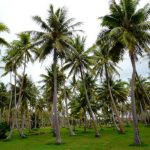
flowering and pollination practice from September to November, the harvest of green pods and processing between June and September.
– Ecotourism in national parks.
– The coconut plantation Soavoanio, one of the largest in the world with an area of approximately 5000 ha belonging to the Voanio Sambava Company .
– The descent by canoe or by boat of Bemarivo River which empties into the Indian Ocean. Bemarivo is the northern boundary of the Betsimisaraka territory .
– The fishermen village near Lake Antohomaro Andohabe, the cascade of Ampijoroa
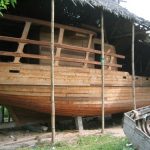 – Vohemar Bay with its breathtaking landscape with the coral reef belt and miles long beach.
– Vohemar Bay with its breathtaking landscape with the coral reef belt and miles long beach.
– The green lake Andranotsara, 7 km south of Vohemar, known for its sacred crocodiles. Legend says that these crocodiles were the residents of the ancient village, which led to the sacrifice and taboos practice in this region.
– The dhows port of Antalaha. The dhows, almost entirely made of wood, are vessels used to transport passengers and goods to ensure supply for the surrounding areas.
– The semiprecious stones workshop in Antalaha.
– The basin of Andapa and its rice field, sheltering the rice granary of the SAVA region .
For questions or information needed on this article, please contact us.





